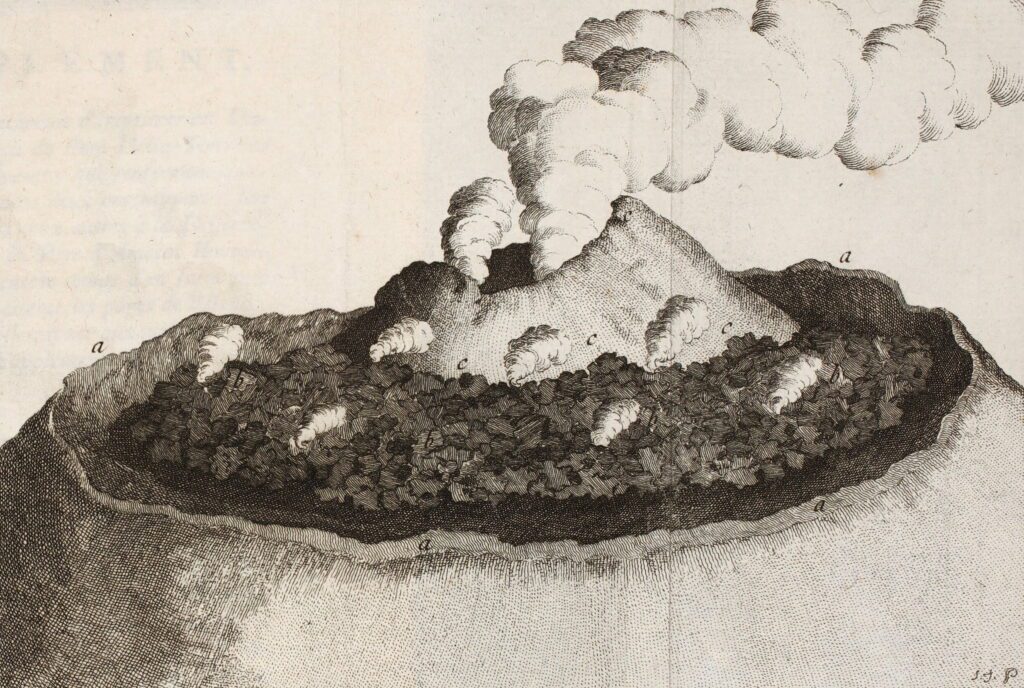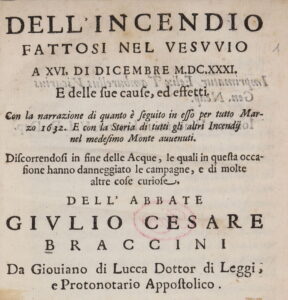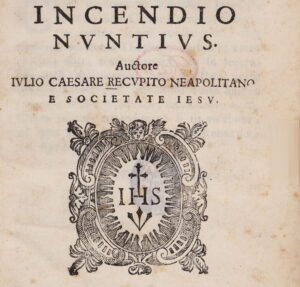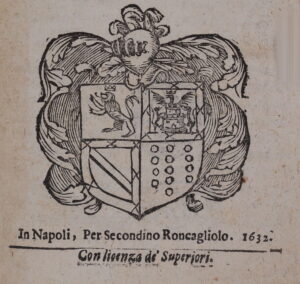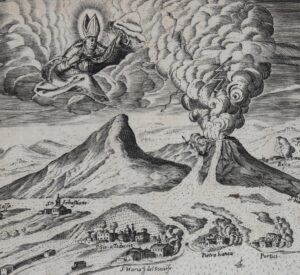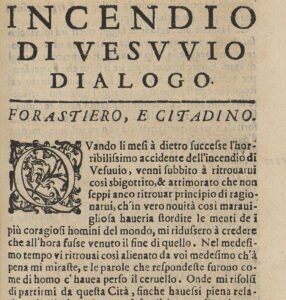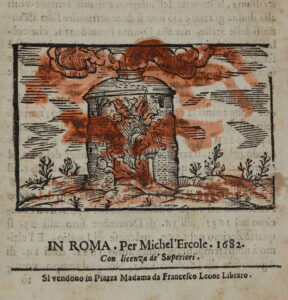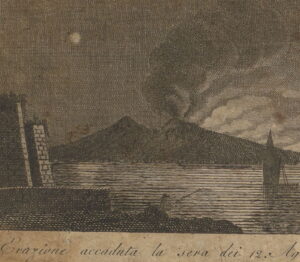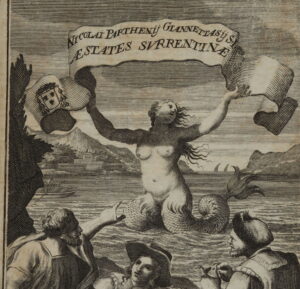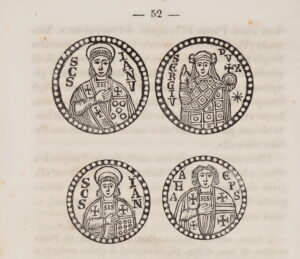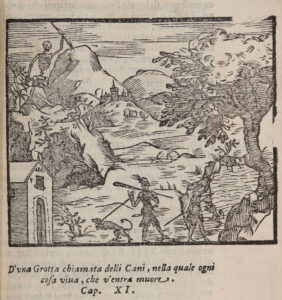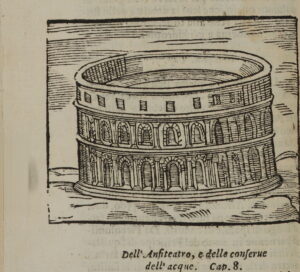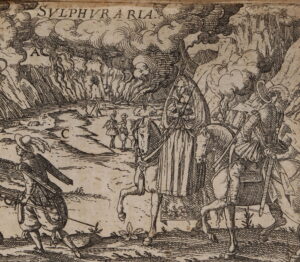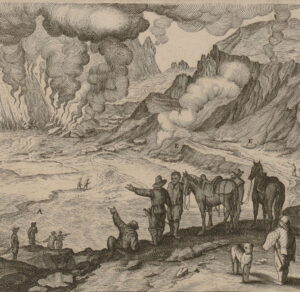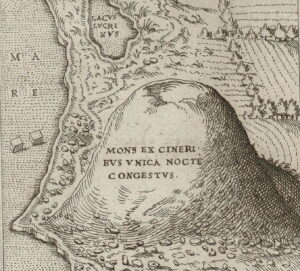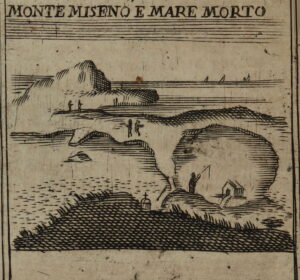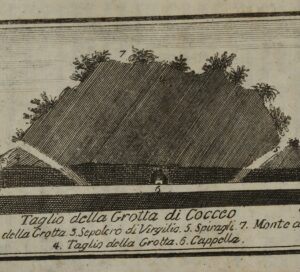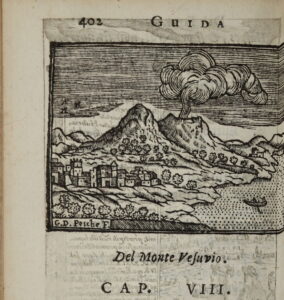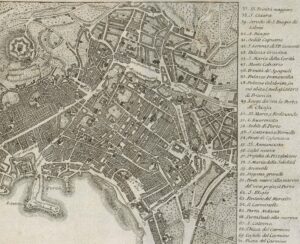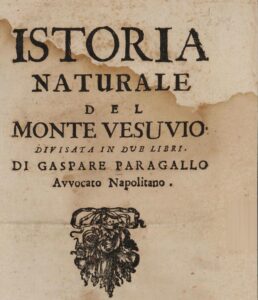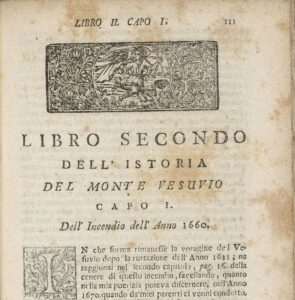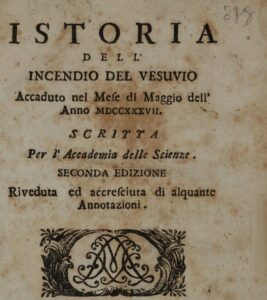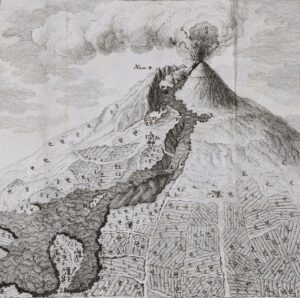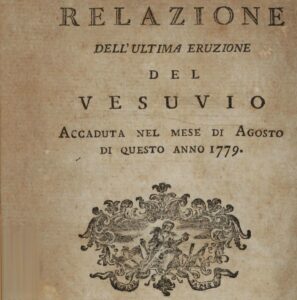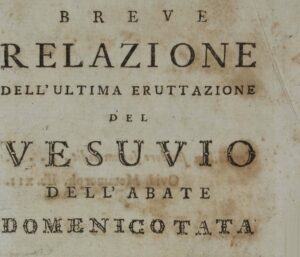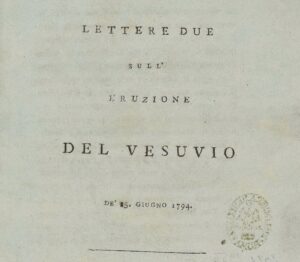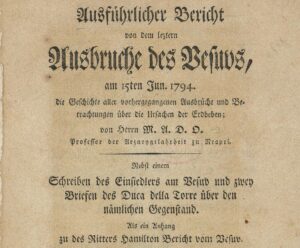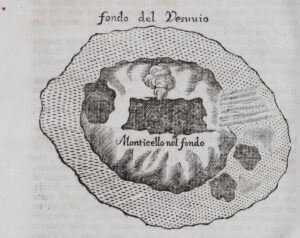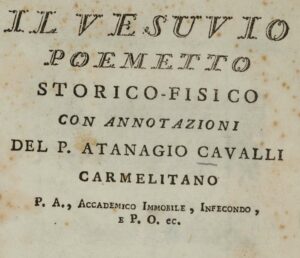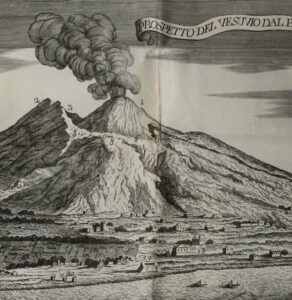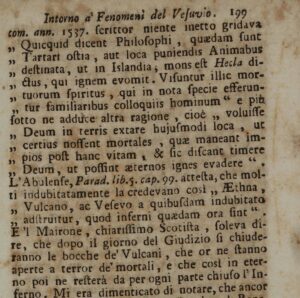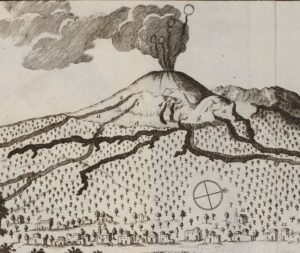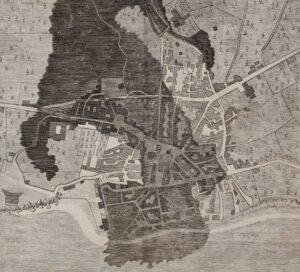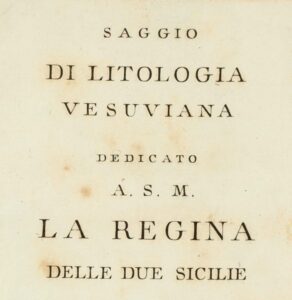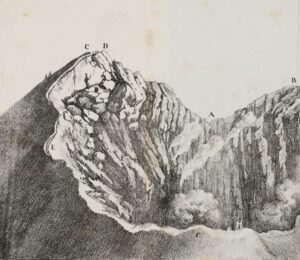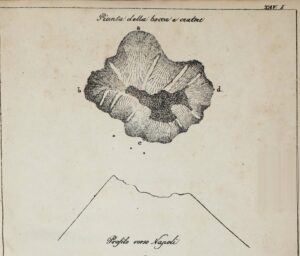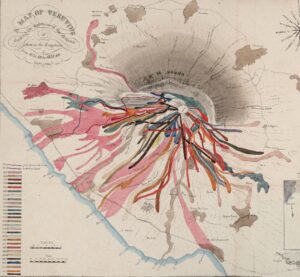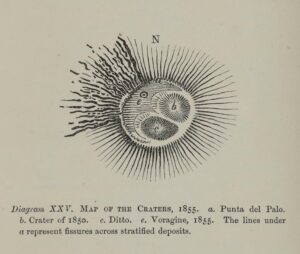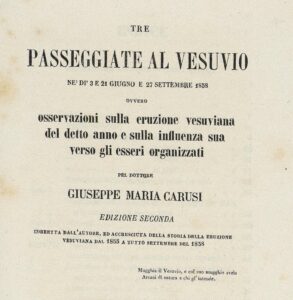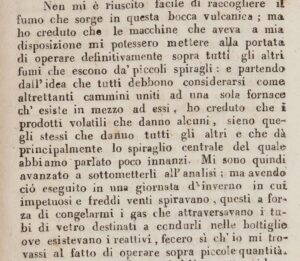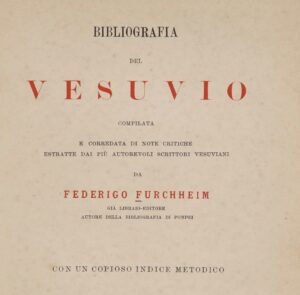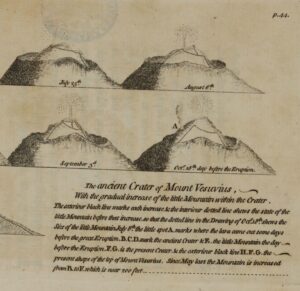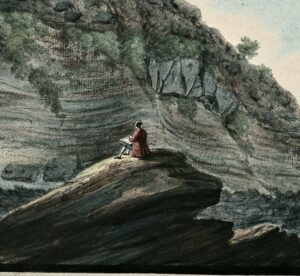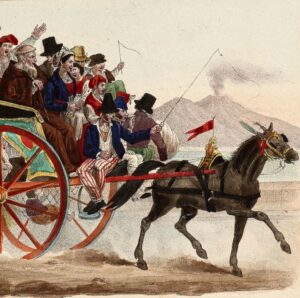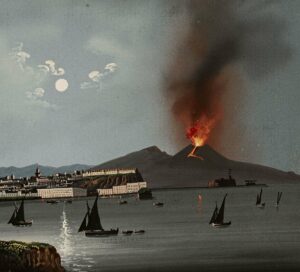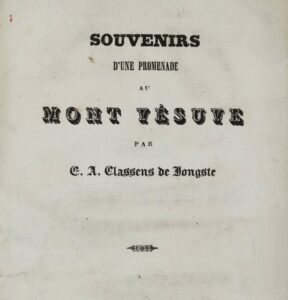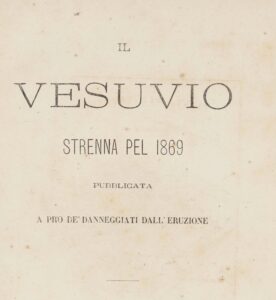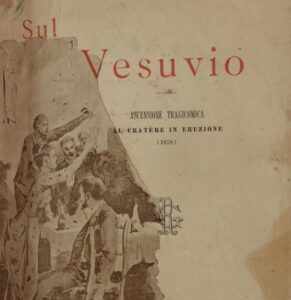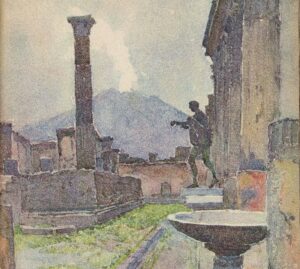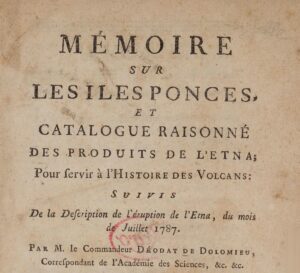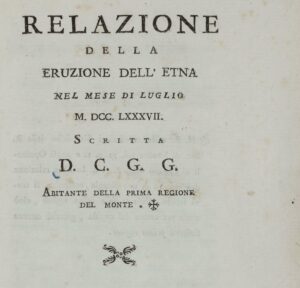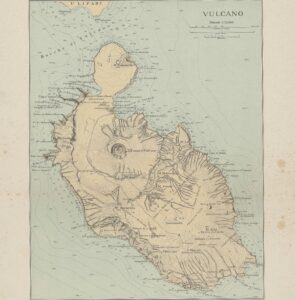Paper Eruptions
Four Centuries of Volcanoes in Print from the Library's Rara Collection
An online exhibition by the Bibliotheca Hertziana - Max Planck Institute for Art History in collaboration with DisComPoSE (Disasters, Communication and Politics in Southwestern Europe: The Making of Emergency Response Policies in the Early Modern Age)
Content
Introduction
A collection of antiquarian books with a history stretching back over more than a century does not ‘grow’ by chance. The original nucleus of the holdings of the Bibliotheca Hertziana – Max Planck Institute for Art History dates back to the end of the nineteenth century and consists of the bequest of the founder Henriette Hertz. It has been successively expanded by generations of librarians and scholars through selective purchases, bequests and donations and today comprises some 20,000 volumes. Since 2015, the traditional sections of the collection have grown in line with a programme of systematic acquisitions, in response also to the Institute’s new directions of research. For example, in agreement with the research department headed by Tanja Michalsky, there has been a focus on antique publications devoted to topics such as Naples and southern Italy, while also opening up the field to ‘natural disasters’ such as earthquakes, floods and volcanic eruptions. Vesuvius constitutes, so to speak, the point of intersection between these interests. This led to the idea of presenting part of the book holdings already present in the ‘rare’ collection, together with numerous more recent acquisitions, through a digital exhibition – ‘Eruzioni di carta’ (‘Paper eruptions’) – for which this material was selected, studied and catalogued by a study group set up for the occasion.
The entire library holdings are currently being digitised in line with the highest technical standards, and are being made available to the public in open source mode. The digitised volumes of this exhibition can be consulted in the DLIB digital library, where they form a special collection (links can be found in the respective files). All texts are undergoing neural transcription with the help of Transkribus, providing additional research tools for those who want to try their hand at this material in the future.
The result of close cooperation between the Library department and the Michalsky research department with the technical support of the Photographic Collection, this digital exhibition has been personally curated by Elisabetta Scirocco, Philine Helas and Hanna Sophie Stegemann, building on the work carried out over the years by librarians Beate Thomas and Barbara Dinsing. The study and cataloguing of the works in the exhibition have been enriched by the contribution of the research group of the ERC project Disasters, Communication and Politics in Southwestern Europe: The Making of Emergency Response Policies in the Early Modern Age (DisComPoSE), directed by Domenico Cecere at the Department of Humanistic Studies of the University of Naples “Federico II”, and dedicated to the links between the circulation of news about natural disasters, the processing of information and memories of the events and the development of emergency management policies in the European and non-European territories of the Hispanic Monarchy between the sixteenth and eighteenth centuries.
While it is true to some extent that “the bibliography of Vesuvius begins with the great eruption of 1631” (Furchheim 1897, Preface, p. V), the volcanic phenomena of Roman Campania Felix continued to attract the interest of travellers and ‘health tourists’ throughout the Middle Ages and the modern age, gaining a prominent place in guidebooks and works aimed at lovers of antiquities who travelled south of Rome. It is no coincidence that these ‘natural monuments’ are included in various picture cycles dedicated to antiquities or the wonders of Italy, alongside architectural monuments built by human hands. However, it is difficult to underestimate the cultural impact of the eruptive event of 1631, which constitutes a real watershed in the history of Naples and its territory and marks the start of the volcano’s continuous activity over the following two centuries. Writers, historians, artists and travellers were continuously interested in the mountain, and during the eighteenth century were joined by naturalists who laid the foundations for the birth of modern geology and volcanology. In the nineteenth century, the latter was to establish itself as a discipline on an international scale, placing the volcanoes of Campania and those of the rest of the world on a similar level of investigation. Visiting Vesuvius and/or the Solfatara as a natural spectacle and historical site of tragic events was throughout the late modern age an integral part of the tour programme of travellers and subsequently of travelogues, while the numerous gouaches depicting Vesuvius during an eruption indicate a flourishing market for such souvenirs.
The six sections of the exhibition retrace this important thematic trail in European publishing and visual culture from the sixteenth to the nineteenth century. The enormous production of texts with accounts, chronological series and catalogues of eruptions, theological discourses, mineralogical and volcanological investigations, printed by Neapolitan publishers and others, was accompanied from the outset by an equally flourishing production of images, linked closely intrinsically and extrinsically with the source texts. The diffusion and transmigration of visual topoi and codes of representation linked to ‘volcanic landscapes’ and catastrophes is in fact another possible key to understanding the volumes on display.
Some of the volumes on display entered the Institute’s collection very early on; others belonged to internationally renowned scholars who have long animated the intellectual life of the Institute, such as Richard Krautheimer. The success of the theme and the rich production of books and pictures on the subject of the eruptions of Vesuvius have recently been matched by the interest of the underground market and unscrupulous collectors. Proof of this is the systematic defacement of many of the volumes on display, with engravings depicting the volcano (represented as a force of nature in activity or as a landscape element) being cut out from them, often in a targeted and selective manner. In these cases, wherever possible, the exhibition cards refer to these missing engravings found in other examples available on the web, to allow a virtual recomposition of the works in their relationship between texts and images, albeit with the awareness of the impossibility of recovering the uniqueness of the book-object that characterised every single example of the same print run. For this reason, the work of scientific analysis for the exhibition was accompanied by the updating of the files concerning these same volumes in the library catalogue.
‘Eruzioni di carta’ is only the first exhibition of its kind. Other exhibitions will follow at regular intervals, with the aim always of combining the library’s scientific and research expertise and presenting some of the treasures of the Institute’s book heritage to the specialist public.
Golo Maurer, Elisabetta Scirocco and Philine Helas
1. The Awakening of the Mountain
On 16 December 1631, after being dormant for about five centuries, Vesuvius awoke with a massive eruption, the first in a long series of catastrophic events that marked its history over the following centuries. Since then, a growing interest in the volcano developed in literary, scientific and cultural-historical circles. The event represents one of the most violent and famous natural disasters of the modern age, not only because of the material damage, but also because of its enormous political, social and cultural impact. Unlike the earthquakes that struck the territories of central and southern Italy more or less regularly, the eruption of 1631 was a highly unexpected event for the Neapolitans, since the long period of inactivity of the volcano had erased their awareness of the danger and the region was considered a fertile and pleasant territory. The unexpectedness of the eruption and the damage it caused generated a sudden change in the perception of Vesuvius, accompanied by the creation of a new repertoire of themes and models used to illustrate the catastrophe.
The first section of the exhibition gives an account of the attention the volcano has attracted since then. It presents texts in Italian and Latin published during the seventeenth century from a wide range of publications and genres, including treatises, poetic texts and printed notices. [AM]
2. The Beauties of Naples and Pozzuoli: Volcanoes, Landscape, and City
This section presents guides and travel texts dedicated to Naples and Pozzuoli written between the late sixteenth and early eighteenth centuries. From the outset, these publications show one of their distinctive features: the historical and artistic description of the city’s sites was accompanied by particular attention to the landscape setting. Citizens and foreigners wishing to learn more about the city of Naples could not fail to notice the pleasantness of its surroundings, with its villas, antiquities and natural beauty. And nor could the thermal waters and volcanic phenomena of Pozzuoli and the Campi Flegrei be left out of any description of the area: they were living, constant and iconic elements of the landscape, part of the wonders of the area along with the vestiges of the Roman past. In addition to the Solfatara of Pozzuoli, the Fumarole of Agnano and the Grotta del Cane, there was the “Monte Nuovo”, suddenly generated by a volcanic and seismic event in 1538. A century later (1631), Mount Vesuvius would impose itself on the other side of the Gulf, as a new iconic element of the Neapolitan landscape and as one of the protagonists in any descriptions of the city (see also Il Forastiero by Giulio Cesare Capaccio, in Section 1 of this exhibition). From the 1740s onwards, Naples became one of the key stops on the Grand Tour, following the rediscovery of Herculaneum and Pompeii. [ES]
3. Vesuvius as a Protagonist in History
During the eighteenth century, interest in Vesuvius intensified in the wake of repeated eruptions that considerably lowered the summit of the volcano and whose lava flows caused irreparable damage to the neighbouring towns of Torre del Greco, Portici and Boscotrecase. For local scholars, as well as naturalists from outside the area, Vesuvius soon became an open-air laboratory, a favoured place for direct observation of explosive phenomena and for collecting minerals and other materials ejected by the volcano. Similarly, there was growing interest in the volcano’s activity over the course of the centuries, in the belief that present-day events should be interpreted in continuity with past events.
This section presents some of the main treatises on Vesuvius published in the eighteenth century, offering a chronology of seismic and eruptive activity from ancient times to the recent past. As evidence of the fortune of some of these texts in the European context, specimens translated into German and French are exhibited, such as Francesco Serao’s Istoria dell’incendio del Vesuvio, a fundamental work for the development of modern volcanology. [MV]
4. Volcanoes as an Object of Scientific Research
Between the second half of the eighteenth century and the end of the nineteenth, Vesuvius continued to exert a growing attraction on artists and lovers of antiquity, but the interest of naturalists became increasingly independent of what fascinated painters, archaeologists and curious foreign travellers. In ascents to the crater and the examination of the lava flows, instrumental observation using thermometers, barometers and seismographs became systematic. Data and observations were shared within the international community of scientists and increasingly compared with those of other volcanoes. The pressure of men of science induced the sovereign to establish the Vesuvius Observatory, inaugurated in 1845, on the occasion of the 7th Congress of Italian scientists in Naples.
The volumes that make up this section reflect the emergence of a scientific discourse that was increasingly distinct from the others. They range from the French edition of Giovanni Maria Della Torre’s work, and, above all, the two famous works by the English diplomat, antiquarian and geologist William Hamilton dedicated to Vesuvius and the Campi Flegrei, accompanied by remarkable engravings, to the works of the Salento naturalist Teodoro Monticelli, in which the focus on mineralogical analysis is systematically accorded more space than an analysis and conjecture based on archaeological and literary evidence. And lastly, there is Friedrich Furchheim’s Bibliografia del Vesuvio (‘Bibliography of Vesuvius’), the first and still essential cataloguing tool on the volcano. [DC]
5. Vesuvius as Souvenir
Under the name of “souvenirs”, this section presents written testimonies and pictorial memories of travel involving the attraction of Vesuvius. These range from Goethe, probably the most famous German traveller – who did not feel the aesthetic appeal of the volcano and yet wanted to climb it three times almost at the risk of his life – to popular literature already oriented towards tourism in the twentieth century. The three albums in the exhibition are special, unique pieces composed according to personal interests: the oldest and richest combines a mixture of images of various kinds and fragments of text (c. 1826); the second presumably reflects the travel itineraries recorded in it (1845, 1852), and the third contains only images of Naples and Pompeii. Vesuvius appears in the views in each of these very different contexts: they are not prints but gouaches, a genre that was flourishing at the time. Another section comprises collections that bring together texts in prose and verse on the theme of “Vesuvius” and show how many different registers the famous fire-breathing volcano could lend itself to: from the romantic to the humorous. The 1869 gift for the victims of the volcano’s destructiveness, in particular, demonstrates that the name alone was considered a selling point. Whatever one’s feelings about the volcano, there is no Naples without Vesuvius. [PH]
6. From the Volcanoes of the Mediterranean to global Volcanology
In the eighteenth century of the Grand Tour, volcanoes were mainly tourist attractions, with a fixed place in guidebooks, travelogues and illustrations. Their prominence was therefore closely connected to the general travel routes and destinations. This also explains the dominant position of Vesuvius until well into the nineteenth century, although in the late eighteenth century it was little by little accompanied also by Etna and Stromboli, as the tourist horizon expanded. Under such circumstances, a certain minimum level of activity was naturally a prerequisite for international attention. Volcanoes that had been extinct or inactive for a long time had a hard time. Both the geographical location and the eruption status were put into perspective when tourist interest was joined by an interest in flourishing volcanology. From a scientific volcanological point of view, volcanoes generally became important actors in the history of the Earth, regardless of whether they were located in Bella Italia or in the virtually unknown Cordillera of the Andes. While volcanology in the late eighteenth century was primarily a French domain – in line with the global reach of the nation at that time – Alexander von Humboldt established the internationalisation and at the same time popularisation of the subject. [GM]
Selected Bibliography
- Alla scoperta del Vesuvio, catalogo della mostra a cura di Giovanni P. Ricciardi et al., Napoli 2006.
- All’ombra del Vesuvio: Napoli nella veduta europea dal Quattrocento all’Ottocento, a cura di Silvia Cassani, Napoli 1990.
- Campi Flegrei. Mito, storia, realtà, catalogo della mostra a cura di Rossana Muzii, Napoli 2006.
- Sean Cocco, Watching Vesuvius: A History of Science and Culture in Early Modern Italy, Chicago 2012.
- Disaster Narratives in Early Modern Naples: Politics, Communication and Culture, ed. by Domenico Cecere et al., Roma 2018.
- Fondazione Memofonte, Sezione Guide di Napoli (https://www.memofonte.it/ricerche/napoli/).
- Vera Fionie Koppenleitner, Katastrophenbilder: der Vesuvausbruch 1631 in den Bildkünsten der Frühen Neuzeit, Berlin 2018.
- Paolo Gasparini, Silvana Musella, Un viaggio al Vesuvio. Il Vesuvio attraverso diari, lettere e resoconti di viaggiatori, Napoli 1991.
- L’Europa moderna e l’antico Vesuvio. Sull’identità scientifica italica tra i secoli XVII-XVIII, a cura di Alfonso Tortora et al., Salerno 2017.
- Libri per vedere: le guide storico-artistiche della città di Napoli. Fonti, testimonianze del gusto, immagini di una città, a cura di Francesca Amirante, Napoli 1995.
- Mons Vesuvius. Storie di sfide e catastrofi tra paura e scienza, a cura di Giuseppe Luongo, Napoli 1997.
- Napoli e il gigante. Il Vesuvio tra immagine scrittura e memoria, a cura di Rosa Casapullo, Lorenza Gianfrancesco, Soveria Mannelli 2015.
- Nature and the Arts in Early Modern Naples, ed. by Frank Fehrenbach, Joris van Gastel, Berlin-Boston 2020.
- Giovanni P. Ricciardi, Diario del Monte Vesuvio: venti secoli di immagini e cronache di un vulcano nella città, Napoli 2009.
- Joachim von der Thüsen, Schönheit und Schrecken der Vulkane. Zur Kulturgeschichte des Vulkanismus, Darmstadt 2008.
- Jörg Trempler, Katastrophen. Ihre Entstehung aus dem Bild, Berlin 2013.
- Le Vésuve en éruption. Savoirs, représentations, pratiques, sous la dir. de Émilie Beck Saiello, Dominique Bertrand, Clermont-Ferrand 2013.
- Il Vesuvio negli occhi. Storie di osservatori, a cura di Lucia Civetta et al., Napoli 2004.
- Vesuvius, Campi Flegrei, and Campanian volcanism, ed. by Benedetto De Vivo et al., Amsterdam 2020.
- Vesuvius Mons. Aspetti del Vesuvio nel mondo antico tra filologia, archeologia, vulcanologia, a cura di Enrico Renna, Napoli 1992.
- Die Vulkane des William Hamilton. Naturreportagen von den Feuerbergen Ätna und Vesuv, hrsg. von Oliver Lubrich, Thomas Nehrlich, Darmstadt 2021.
Impressum
Scientific project: Philine Helas, Elisabetta Scirocco
Contents: Domenico Cecere [DC], Philine Helas [PH], Golo Maurer [GM], Annachiara Monaco [AM], Antonio Perrone [AP], Elisabetta Scirocco [ES], Hanna Sophie Stegemann [HS], Milena Viceconte [MV].
Translations: Lucian Comoy, Alessandra Ricci (EN), Hanna Sophie Stegemann (DE), Elisabetta Scirocco (IT)
Coordination and editing: Hanna Sophie Stegemann, Elisabetta Scirocco, Philine Helas
Implementation Web: Tatjana Bartsch
Assistance: Hanna Sophie Stegemann
Digitization of rare books: Anna Wilkens, Paola Filatro
DLIB: Klaus Werner
Transkribus: Elisa Bastianello
Acknowledgements: Barbara Dinsing, Roberto Lilli, Milivoj Kokic, Manuela Pitterà, Alessandro Simonetta, Paolo Talone, Beate Thomas
https://www.biblhertz.it/de/library
https://www.biblhertz.it/de/dept-michalsky/palimpsest-naples
https://www.biblhertz.it/de/katastrophen-neapel
www.discompose.unina.it
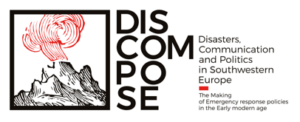
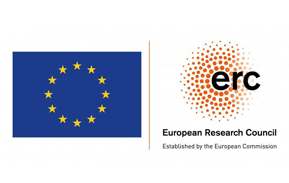
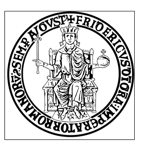
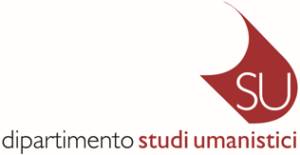
This project has received funding from the European Union’s Horizon 2020 research and innovation programme under grant agreement No 759829.
1 April 2022
